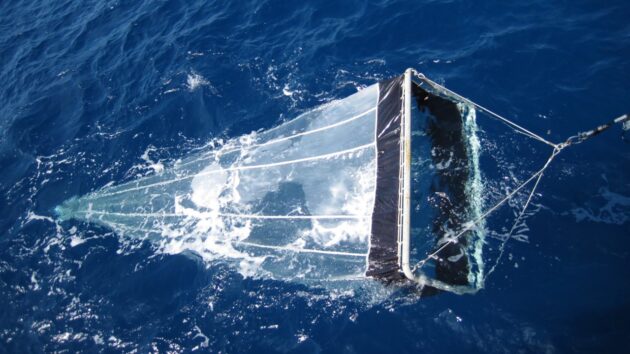
Ocean Legacy Foundation’s research shows microfiber plastic pollution found in the Antarctic
by CM Staff

Over 400 million tons of plastic is produced each year worldwide, half of which is for single-use items, and 8 to 13 metric tons of plastic ends up in the ocean each year, making up 80 per cent of all marine pollution.

Over 400 million tons of plastic is produced each year worldwide, half of which is for single-use items, and 8 to 13 metric tons of plastic ends up in the ocean each year, making up 80 per cent of all marine pollution.
RICHMOND — Ocean Legacy Foundation (OLF), a Canadian non-profit organization that develops and implements worldwide plastic pollution programs with the goal to end ocean plastic pollution in industries, released results from their plastic pollution study that took place in Antarctica in partnership with Ocean Geographic from February 12-23, 2023, as part of the most recent Antarctic Climate Expedition 2023 (ACE 2023). The ACE 2023 was spearheaded by Dr. Sylvia Earle, Oceanographer, Marine Biologist and Explorer, and Michael AW, Ocean Geographic Founder. 120 thought leaders from 20 countries in the fields of science, art, education, and economics, alongside teenagers and corporate executives, came together for ACE 2023 to strategize and take action on the climate crisis. Expedition members helped formulate eight resolutions to achieve global net zero by 2035 and preserve a healthy ocean planet for future generations.
Chloé Dubois, co-founder, Ocean Legacy Foundation, was one of the 120 global leaders who took part in ACE 2023. Dubois’ responsibility throughout the expedition, alongside Alex Rose, Science Editor, Ocean Geographic, was to investigate the presence of microplastic pollution in select locations in Antarctica. Using surface sample trawls, the abundance of plastic pollution was quantified around icebergs and smaller chunks of floating ice. Samples were analyzed using microscopy at the University of British Columbia in partnership with Ocean Diagnostics. Results demonstrated that all wet samples recovered contained plastic pollution in the form of microfiber contamination and illustrated the prolific nature of plastic pollution presence in Antarctica’s open ocean environment.
“The exploration of plastic pollution around the Antarctic was a rare and unique opportunity to begin to quantify the presence of plastic pollution in one of the wildest places left on this planet,” said Chloé Dubois, co-founder, Ocean Legacy Foundation. “This study confirms that just as other parts of the ocean, Antarctica is no exception, and its waters are contaminated by plastic pollution.”
This study was not designed to capture and control microfiber contamination. Therefore, recent research on microplastics in the Southern Ocean and its considerable findings underscore the need to develop targeted methods to accurately study microfiber pollution to better understand its footprint in the polar waters of Antarctica.
“There is also a critical need to increase microplastic base-line data and we need to refine best practices to test for and control microfiber pollution in Antarctica,” added Dubois. “Consistently quantifying microplastic pollution over a timeframe will become an important benchmark and endeavour as human activity continues to increase in this remote area of the world.”
The eight resolutions formulated by the Antarctic Climate Expedition 2023 team to drive Global Net-Zero from an ocean perspective by 2035, include:
- Protect marine ecosystems and implement 3d and climate-smart protected areas from the seafloor to the sea surface.
- Demand the end of fossil fuel extraction and use in the ocean.
- Draw upon coastal stakeholders and indigenous experience, knowledge, and wisdom in ocean conservation.
- Create a circular economy at all levels.
- Achieve renewable energy production that does not harm natural environments.
- Communicate the urgency of the ocean-climate crisis in ways that lead to action.
- Reduce wastage and maximize food proficiencies.
- Empower youth and create space for the next generation to lead.
Over 400 million tons of plastic is produced each year worldwide, half of which is for single-use items, and 8 to 13 metric tons of plastic ends up in the ocean each year, making up 80 per cent of all marine pollution.